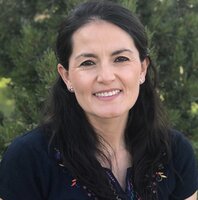
A trio of researchers from the Department of Microbiology has discovered an essential function of a landmark protein in regulating movement across bacterial cells.
Members of the Mera Lab determined how the coiled-coil polar protein TipN moves a region of the chromosome called parS. They also observed a connection between TipN and the DNA replication initiator DnaA, revealing a new communication pathway within the cell that was previously unknown. Their findings appear in Molecular Biology of the Cell.
The lab’s overarching goal is understanding how bacteria organize and orchestrate the complex series of events required for cell growth and division. Unlike eukaryotes, whose cells duplicate and segregate at separate time points, bacterial duplication and segregation of the chromosome happens simultaneously in a closely regulated process. If there are any disruptions in the coordination of these events, the cell dies. Consequently, there is little room for error.
“The cell is like an orchestra,” said Paola Mera, an assistant professor of microbiology and lead investigator of the study. “It must coordinate the different musicians so they can play in synergy and produce beautiful pieces of music. It is a very complex process.”
Crescentus shaped bacteria organize heavily at the cell poles, where many regulators gather. While little is known about the mechanisms involved in cell pole regulation, researchers from Mera’s group noticed that TipN was communicating with the regulator initiating chromosome duplication. Previous work in the lab noted irregularities surrounding TipN and flagged it as a protein of interest. Wanting to explore the mechanisms for various TipN functions, they began with chromosome segregation.

“We noticed this fluorescent tagged protein was not behaving the way we expected,” said Morgan Letzkus, a graduate student and an author on the paper. “That led to the discovery of TipN’s importance in segregation and replication, and the realization that it was communicating with DnaA.”
These findings advance scientists’ limited understanding of bacterial growth regulation.
“We have really begun to appreciate our dependence on microbes,” Mera said. “Good microbes impact our health and environment; we use them to make medicine and drugs. But bad microbes can cause disease, so there is a strong desire to be able to control the growth of both types.”
Promoting the growth of good microbes and limiting the growth of undesirable varieties requires understanding the mechanisms underlying growth regulation. There are still many unanswered questions about the initiation of DNA replication, Mera said. The next step for her group is evaluating how TipN regulates the speed of cellular movement.
Aiding in that research will be Corey Trela, a sophomore MCB major and a contributing author who joined the lab as a freshman. Trela’s involvement highlights the value of hands-on lab experience for undergraduates.
“Learning something in class is a very different experience to applying that concept in the lab and being able to understand what’s happening molecularly,” Trela said. “It’s been very exciting to actually see the biology.”
While queries from undergraduate students are not unusual, Mera highlighted the aspects of Trela’s inquiry that set her apart. After researching microbiology labs within the department, Trela found Mera’s group, which aligned with her research interests and goals. She read their most recent publication and emailed Mera to discuss the article.
“When you have lots of interest in the lab but limited space, the inquiries that stand out are the ones like Corey’s,” Mera said. “She utilized a great strategy of actually reading the paper and making specific comments.”
Under the mentorship of Letzkus, Trela’s integration into the lab has been swift.
“It’s important to provide students with an opportunity to learn hands-on in the lab and apply what they’re reading in a textbook to real life,” Letzkus said. “You can read about PCR and recite the steps but until you actually do a PCR, you don’t fully understand.”
“The mentoring experience is a win-win for everyone,” Mera said.
